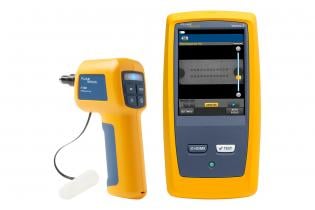Professionals rely on optical fibre testing equipment to maintain efficient data transmission.
Professionals rely on optical fibre testing equipment to maintain efficient data transmission.
Blog Article
The Function of Optical Fiber Screening in Ensuring Quality and Effectiveness in Connection Solutions
In today's quickly developing digital landscape, the relevance of optical fibre testing can not be overemphasized, as it serves as a foundation for guaranteeing the top quality and effectiveness of connectivity remedies. As modern technology proceeds to breakthrough, the future of optical fibre testing presents interesting obstacles and possibilities that merit closer exam.
Relevance of Optical Fibre Screening
The relevance of optical fiber screening can not be overstated in making certain the stability and efficiency of interaction networks. As the foundation of contemporary telecoms, optical fibres assist in high-speed information transmission, making their reliability important to functional success. Examining serves as a positive action to recognize possible issues such as signal loss, attenuation, and physical damage, which can jeopardize network performance.
Regular testing permits the verification of setup high quality and the detection of issues that could impact data stability - optical fibre diameter analyser. By employing rigorous testing procedures, network operators can minimize the dangers related to network failures, consisting of downtime and monetary losses. Additionally, optical fiber screening makes certain conformity with market standards and guidelines, boosting the general quality of service given to end-users.
Eventually, the systematic assessment of optical fibers adds to the durability and effectiveness of interaction systems. It allows stakeholders to make educated choices pertaining to maintenance, upgrades, and troubleshooting. In a landscape where data is increasingly essential, prioritizing optical fibre testing is vital to sustaining robust and effective connection remedies, therefore supporting the demands of modern digital settings.
Sorts Of Optical Fibre Examinations
Various testing methods are used to guarantee the functionality and dependability of optical fibers within interaction networks. These tests can be extensively categorized into two primary types: installation tests and maintenance tests.
Installation tests are conducted right away after the installment of optical fibre cables to verify their performance and honesty - optical fibre diameter analyser. One of the most typical setup examinations consist of Optical Time-Domain Reflectometry (OTDR) examinations, which examine the quality of the fiber by determining faults or breaks, and end-to-end loss examinations, which determine the total optical loss from one end of the fibre to the various other
Maintenance tests, on the various other hand, are carried out regularly to make sure continuous performance and discover possible concerns in time. These include aesthetic inspection, which checks for physical problems or improper installations, and continuity examinations, which verify that the signal can go through the fiber without disruption.
Furthermore, progressed tests such as Polarization Mode Dispersion (PMD) and Chromatic Diffusion (CD) tests can be conducted to review the fiber's performance under various conditions. By employing these varied testing techniques, service technicians can preserve high criteria of quality and reliability in optical fiber networks.
Benefits of Regular Checking
Normal testing of optical fibres plays a critical function in keeping the total performance and reliability of interaction networks. By performing normal analyses, companies can make certain that their fiber optic installations fulfill industry standards and operate efficiently. This positive approach assists to determine prospective weaknesses and destruction gradually, allowing for timely interventions before problems intensify.

Cost-effectiveness is an additional benefit. By addressing minor concerns early, companies can avoid the high expenses connected with significant repair services or system failings. Routine testing also promotes conformity with regulatory requirements, making certain that the network complies with required safety and security and efficiency criteria.
Usual Issues Identified
Recognizing typical issues in optical fiber networks is vital for maintaining optimum efficiency and dependability. Numerous aspects can add to disruptions, including physical damages, inadequate setup practices, and ecological impacts.
Physical damages, such as bends, breaks, or abrasions, can considerably weaken signal quality. Improper installment methods, consisting of extreme tension or poor safeguarding of wires, might cause increased depletion and loss of connection. Additionally, ecological aspects such as temperature level variations, wetness access, and rodent interference can endanger the integrity of the fibre.
Adapter problems also frequently occur, with inappropriate positioning or contamination causing enhanced insertion loss. Splicing go to this site mistakes can introduce significant signal destruction if not performed with precision.
Dealing with these usual problems with regular optical fiber testing not only improves network integrity however additionally optimizes overall performance, making certain that connectivity remedies stay robust and effective.
Future Fads in Testing
As the need for high-speed connectivity continues to rise, the future of optical fibre screening will progressively concentrate on automation and advanced analytics. The assimilation of fabricated intelligence (AI) and artificial intelligence (ML) in screening processes will certainly make it possible for more effective information evaluation and anticipating upkeep, reducing downtime and boosting general network integrity. Automated testing services will certainly enhance the assessment and certification of fibre networks, decreasing human mistake and boosting screening throughput.
Another substantial pattern is the adoption of remote screening innovations. As the deployment of fiber networks broadens into remote and underserved locations, remote testing capabilities will enable professionals to keep an eye on and identify network problems without physical existence, thus lowering operational expenses and boosting action times.
In addition, there will certainly be a change in the direction of best site even more detailed testing requirements that encompass not just standard loss dimensions but likewise performance metrics such as latency and transmission capacity application. This alternative approach will promote much better network management and optimization strategies.
As these trends advance, the optical fiber testing landscape will certainly not just enhance the high quality and effectiveness of connection remedies but also support the growing intricacies of modern interaction networks.
Final Thought
In final thought, optical fiber screening serves as a fundamental component in keeping the integrity and efficiency of interaction networks. The continuous commitment to normal screening not only enhances data transmission yet additionally lines up with market requirements, cultivating dependability in network infrastructures.
Report this page